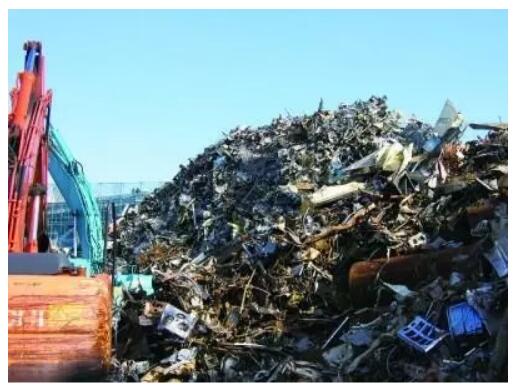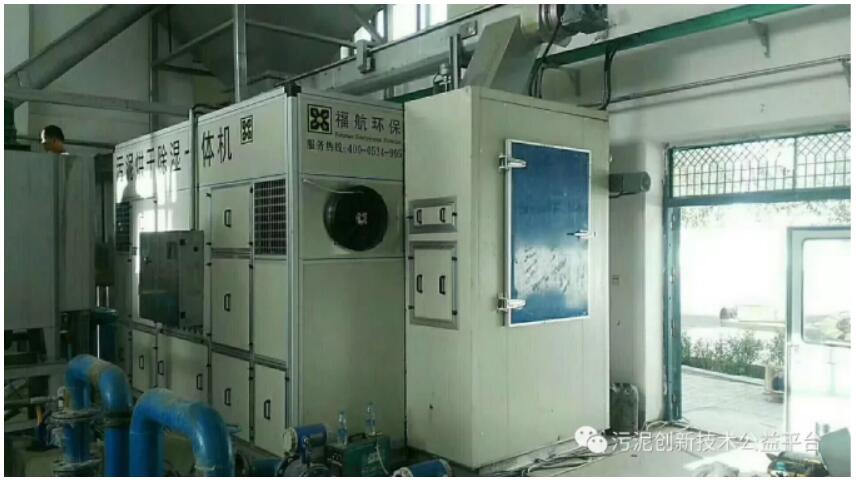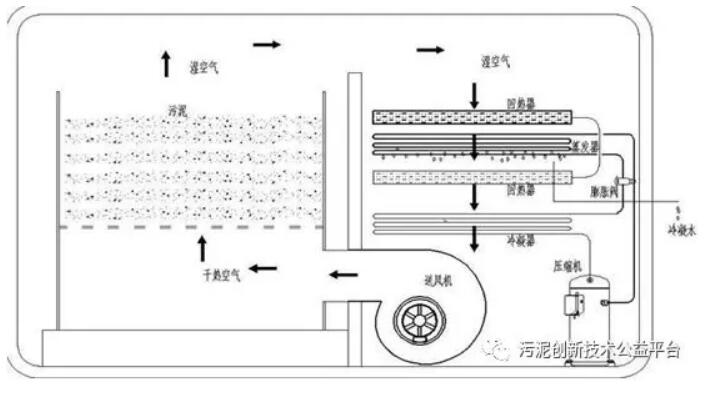Industry News
Top 10 provinces release new solid waste policies, industry may face changes
- File attachment list :
Top 10 provinces release new solid waste policies, industry may face changes
Environmental Leadership Circle 2019-1-23
In recent years, there have been frequent cases of hazardous waste dumping and landfilling across provinces, with dumping sites mostly located in rural or remote areas at the provincial border, posing a serious threat to the local ecological environment and public health. The illegal transfer of hazardous waste across provinces involves multiple departments such as environmental protection, public security, transportation, and logistics. Such behavior should be subject to strengthened supervision and increased crackdown efforts.

Illegal dumping of hazardous waste shall bear criminal responsibility
In the process of hazardous waste transfer, if pollution is caused by unauthorized dumping or disposal, the organizers and implementers shall bear the responsibility; For organizations and implementers who are unclear or physically responsible, the transporter shall bear the responsibility; If the transporter is unclear or unable to bear the responsibility, the responsibility shall be borne by the shipper—— Management Measures for the Transfer of Hazardous Waste (Revised Draft) (Draft for Comments)
Those who illegally discharge, dump, or dispose of hazardous waste of more than three tons are considered to have "serious pollution of the environment" and are generally sentenced to fixed-term imprisonment of not more than three years or detention, and may also be fined. Those who illegally discharge, dump, or dispose of more than 100 tons of hazardous waste shall be deemed to have "particularly serious consequences" and shall be sentenced to fixed-term imprisonment of not less than three years but not more than seven years and fined—— Judicial Interpretation of "Two Highs"
The illegal transfer of hazardous waste across provinces will definitely be subject to legal sanctions, and according to current regulations, cross provincial transfer must adopt an approval system.
With the continuous promotion of the battle against pollution prevention and control, especially the launch of the "Clean Waste Action 2018" this year, solid waste pollution prevention and control has become an increasingly important focus of environmental protection work in various regions.
Since the beginning of this year, 10 provinces (autonomous regions, municipalities directly under the central government) have issued stricter policies and measures aimed at preventing and controlling solid waste pollution, and have put forward specific goals and opinions for solid waste prevention and control work in the coming years.
These new policies have some common directions: firstly, vigorously improving the disposal capacity of hazardous waste has become a top priority for future prevention and control work in various provinces; Secondly, the coordinated disposal of hazardous waste in cement kilns has become the focus of construction in multiple provinces (municipalities, autonomous regions); The third issue is about inter provincial cooperation in the disposal of hazardous waste. Currently, each province (municipality, autonomous region) has different opinions and tends to formulate corresponding plans based on their own situation.
In April of this year, the Environmental Protection Department of Guangdong Province issued the "Three Year Action Plan for Solid Waste Pollution Prevention and Control (2018-2020)", becoming the first province to regulate solid waste this year. With the implementation of the "Clean up Action 2018" by the Ministry of Ecology and Environment, Shandong, Shaanxi, Xinjiang, and Henan also successively issued prevention and control plans in August and September; October to November became the peak period for policy release, with provinces and cities such as Yunnan, Anhui, Qinghai, Jiangsu, Sichuan, and Chongqing successively issuing new policies. Frequent policies indicate new trends in the development of the solid waste industry, and the industry landscape will usher in a new round of adjustment.
Enhancing hazardous waste disposal capacity has become the focus of work in each province
While various regions have put forward requirements to accelerate the construction of treatment and disposal facilities, they also encourage key enterprises that generate large amounts of solid waste, especially hazardous waste, to build their own waste treatment and disposal facilities.
The mismatch between solid waste treatment facilities and production volume, and the inability of existing disposal capacity to meet actual disposal needs, are the main problems faced by solid waste pollution prevention and control work in various provinces. Especially with the continuous increase in the production of industrial solid waste, the treatment and disposal of solid waste such as hazardous waste, medical waste, and sewage treatment plant sludge have not been fundamentally solved. In addition, the solid waste management capacity is very weak, and the solid waste pollution prevention and control work in various provinces is facing a severe situation.
Therefore, in the policy documents of each province, enhancing the construction of disposal capacity has become the primary task goal.
Taking Chongqing as an example, according to the "Layout Plan for the Construction of Hazardous Waste Centralized Disposal Facilities in Chongqing (2018-2022)", it is predicted that the amount of hazardous waste generated in Chongqing will reach 910600 tons in 2022, an increase of 50.51% compared to 2017; It is expected that the total amount of municipal solid waste incineration fly ash generated in the city will be 169400 tons; It is expected that the total amount of medical waste generated in the city will be 39000 tons, an increase of 83.96% compared to 2017. Faced with the continuous increase in hazardous waste generation, there is a significant gap in disposal capacity, which has become a prominent problem. In 2022, the expected demand for hazardous waste disposal capacity in Chongqing is 574900 tons (excluding comprehensive utilization), of which the centralized disposal capacity gap is 457900 tons (including 169400 tons of waste incineration fly ash disposal capacity gap).
Faced with the increasing amount of solid waste generated, various regions have put forward requirements to accelerate the construction of treatment and disposal facilities, while also encouraging key enterprises with large amounts of solid waste, especially hazardous waste, to build their own waste treatment and disposal facilities. At the same time, Guangdong and other places have also put forward new measures such as deepening the reduction and recycling of solid waste, mandatory classification of household waste, and internal capacity reduction of sewage treatment plants, gradually shifting the focus of work towards effectively reducing the amount of solid waste generated.
Collaborative disposal of cement kilns receives policy support from multiple regions
Cement companies aspiring for transformation and development choose collaborative disposal as a breakthrough point to enable rapid growth.
In terms of improving the comprehensive utilization level of industrial solid waste, the coordinated disposal of solid waste in cement kilns has become a hot topic. In this round of local policies, multiple provinces (autonomous regions, municipalities directly under the central government) have expressed clear support and encouragement for this technological route.
For example, in Jiangsu Province, which proposes to optimize the layout of solid waste disposal facilities in various districts and cities, the tasks of "vigorously promoting the collaborative disposal of existing industrial kilns" and "coordinating planning and accelerating the construction of centralized disposal facilities" are equally included in the "Jiangsu Province Hazardous Waste Centralized Disposal Facility Construction Plan". In addition to proposing specific measures such as increasing positive publicity efforts, strengthening financial support, and researching the establishment of collaborative disposal pricing policies to eliminate market and institutional bottlenecks, it is also stipulated that Nanjing, Wuxi, Xuzhou, Changzhou, Zhenjiang and other places will construct cement kiln collaborative disposal facilities.
According to statistics, as of the end of November, China has obtained a total of 57 qualifications for collaborative disposal of hazardous waste in cement kilns, 49 comprehensive hazardous waste disposal projects, and a disposal scale of 2.84 million tons per year. At present, the total production capacity of incineration hazardous waste disposal in China is 6.34 million tons per year, of which cement kiln collaborative disposal accounts for 45% and traditional incineration technology accounts for 55%. The scale of the two is relatively close. In 2017 and 2018, China's cement kiln collaborative disposal of hazardous waste projects added 19 and 26 new projects, with an added scale of 1.04 million tons/year and 1.66 million tons/year, respectively. Compared to the period from 2014 to 2016, when the total number of projects was still in single digits, China's cement kiln collaborative disposal capacity for hazardous waste has grown rapidly in the past two years.
Industry insiders believe that the rapid development of collaborative disposal of cement kilns is due to the improvement of relevant national standards and technical guidelines, and the increasingly complete technical system, which has officially become a "new force" in environmental governance. Cement enterprises that are interested in transformation and development choose collaborative disposal as a breakthrough point, allowing them to develop rapidly. Secondly, with the continuous increase in national environmental governance efforts, especially the rapid increase in demand for solid waste and hazardous waste disposal facilities, the technology of cement kiln collaborative disposal, which has a relatively short cycle and large disposal capacity, is welcomed. In addition, the industry generally believes that it is not ruled out that some cement production enterprises may use cement kiln collaborative disposal projects to avoid environmental governance administrative measures such as production stoppage and restriction.
Cross provincial cooperation in hazardous waste disposal needs to be further broken
Different provinces have different views on this, either supporting and encouraging it, or explicitly prohibiting it. Currently, most provinces have a cautious attitude.
The government documents of Guangdong, Shaanxi, Xinjiang, and Qinghai do not explicitly mention the content of inter provincial cooperation in the disposal of hazardous waste, and classify it as a "neutral attitude/unspecified"; Although the governments of Shandong and Chongqing have mentioned this, their support is limited. They adopt the "proximity principle" for hazardous waste disposal and encourage cross regional cooperation among districts and cities with conditions to achieve complementary treatment categories and capabilities.
The four provinces with a clear attitude are Henan, Anhui, Jiangsu, and Yunnan. The Three Year Action Plan for Pollution Prevention and Control in Henan Province (2018-2020) clearly states that hazardous waste management units should mainly dispose of hazardous waste in their own province and strictly control the amount of hazardous waste transferred from other provinces.
In recent years, many local governments have explicitly stated their attitude towards strict control of hazardous waste in other provinces in their planning. In May 2016, Hebei Province stipulated in the "Notice on Strengthening the Supervision of Hazardous Waste by the Hebei Provincial Department of Environmental Protection" that "strictly control the transfer of hazardous waste into our province for storage or disposal, and generally prohibit the transfer of hazardous waste such as waste acid, waste alkali, waste emulsion, etc. that have no utilization value and low disposal costs". In November last year, Hunan Province released the "Thirteenth Five Year Plan for Environmental Management of Key Solid Waste in Hunan Province", in which the principle of "strict entry and lenient exit" clearly stipulated the need to "strictly control the types, quantities, and flow of hazardous waste transferred across provinces, and resolutely prevent the transfer of hazardous waste from outside the province to Hunan Province for storage and harmless disposal".
Overall, the majority of provinces hold a "ban/limited support" attitude towards inter provincial cooperation in hazardous waste disposal, but at the same time, there are also some new policy changes.
Not long ago, the "Cooperation Agreement on Cross provincial and Municipal Transfer of Hazardous Waste" signed in the Sichuan Chongqing region broke down barriers to cross regional cooperation. In order to further promote the development of the Yangtze River Economic Belt, strengthen the joint supervision of hazardous waste transfer across provinces and cities, and promote the safe and timely disposal of hazardous waste in Sichuan and Chongqing, the cooperation in hazardous waste disposal across provinces and cities will jointly promote and improve the solid waste management level of the two places. The Sichuan Provincial Government has also stated that it will gradually strengthen strategic cooperation with neighboring provinces, cities, and districts.
Yunnan Province has released the "Guidelines for Cross Provincial Approval of Hazardous Waste Transfer", with the following scope of applicants and application conditions:
Hazardous waste generating units within the administrative region of Yunnan Province that apply to transfer hazardous waste to other provinces (autonomous regions, municipalities directly under the central government) for storage, utilization, and disposal. (Cross provincial relocation)
Hazardous waste management units within the administrative region of Yunnan Province that apply to transfer hazardous waste from other provinces (autonomous regions, municipalities directly under the central government) to the province for storage, utilization, and disposal. (Cross provincial migration) (see attachment for details)
Note: In recent years, hazardous waste disposal has encountered difficulties. Due to various factors such as the mismatch between the amount of hazardous waste generated and the disposal capacity, significant regional differences in disposal prices, and environmental risk control, there are currently many restrictions on the inter provincial transfer of solid waste, especially hazardous waste. Different provinces have varying views on this matter, either supporting or encouraging it, or explicitly prohibiting it. At present, most provinces have a cautious attitude. Before transferring hazardous waste across provinces, all hazardous waste enterprises must first clarify the specific policies of the local province to avoid losses







